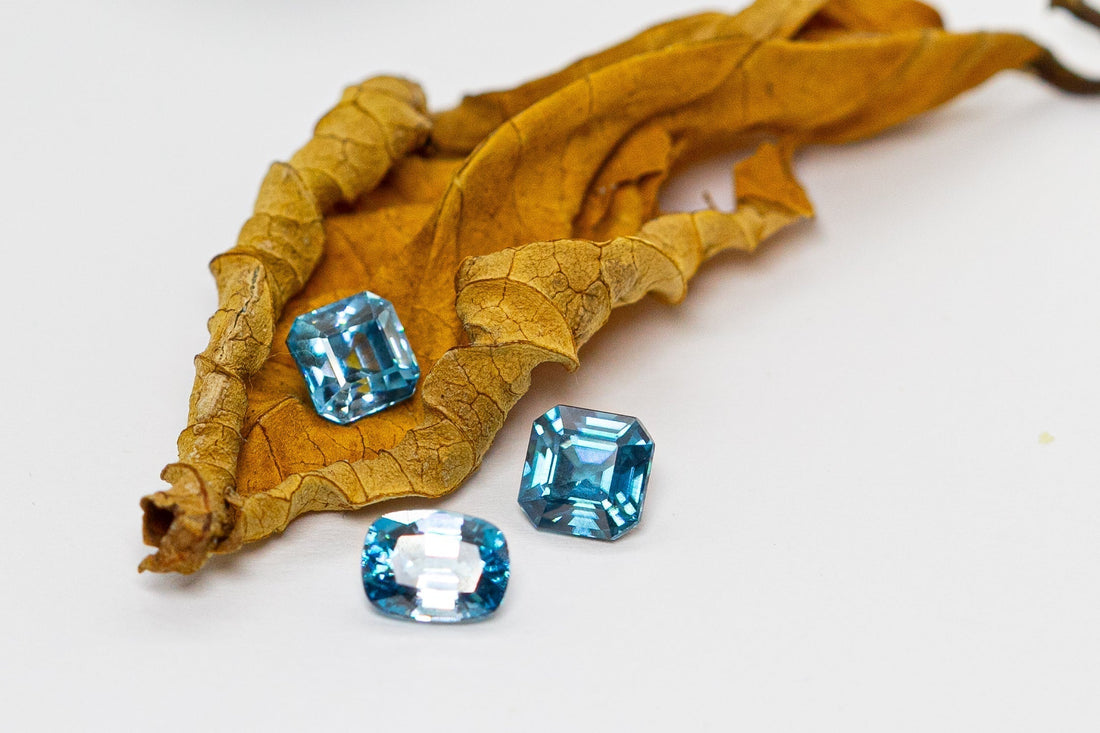
Zircon: A Natural Gemstone Often Mistaken for a Synthetic Imitation
Share
Zircons are the ancient sages of the gemstone world—literally as old as time itself. The oldest known zircons, discovered in Australia, date back 4.4 billion years, making them the oldest mineral on Earth! These extraordinary crystals have witnessed the formation of our planet and hold within them a geological record of Earth’s earliest history.
Why Is Zircon So Underrated?
Despite its fascinating history and stunning beauty, zircon has suffered from an identity crisis. Many people mistakenly associate it with cubic zirconia (CZ), a synthetic diamond simulant made from zirconium dioxide (ZrO₂). This confusion, fueled by misleading jewelry store labels, has unfairly overshadowed zircon’s true nature as a 100% natural gemstone.
Brilliance That Rivals Diamonds
Zircon is not just old—it’s also breathtakingly beautiful. With its high dispersion and refractive index, zircon exhibits an exceptional brilliance and fire, often rivaling that of diamonds. In fact, certain well-cut zircons can display a level of sparkle that closely resembles that of their more famous (and much more expensive) counterparts.
A Rainbow of Colors
Another reason to appreciate zircon is its incredible variety of colors. While many people are familiar with blue zircon, this gemstone also occurs in golden yellow, champagne, red, green, and even colorless (often mistaken for a diamond).
The Value of Zircons in 2025: Pricing and Rarity
Among zircons, the most valuable variety is red hyacinth zircon. The price of these stones depends primarily on color intensity, dispersion, and carat weight. The brighter and more vivid the red, the more expensive the stone, as stronger color saturation is often accompanied by higher dispersion, enhancing the gemstone’s brilliance.
Red hyacinth zircons are rare and typically start at $200 per carat, reaching $500 per carat for stones with exceptional color and optical properties. Other highly saturated zircons in vivid shades of orange, yellow, and brown also command higher prices, often ranging from $300 to $500 per carat for premium-quality specimens.
Standard zircons, including those in less saturated hues, start at $100 per carat and can reach $200 to $300 per carat, depending on their brightness and dispersion. As a rule, the more intense the color and the stronger the dispersion, the higher the price. This combination of natural brilliance and rarity makes high-quality zircons a desirable choice for collectors and jewelry enthusiasts alike.
Zircon’s Comeback
Fortunately, with the rising popularity of colored gemstones, more people are rediscovering the true value of zircon. No longer overshadowed by cubic zirconia, natural zircon is reclaiming its rightful place in fine jewelry collections.
Bottom Line
If you’re looking for a gemstone with an incredible history, dazzling brilliance, and a wide range of colors—zircon is a natural treasure worth considering!

Olga Bachurina,
Co-Founder of Venus in Libra,
Certified by GIA & Gübelin Academy



